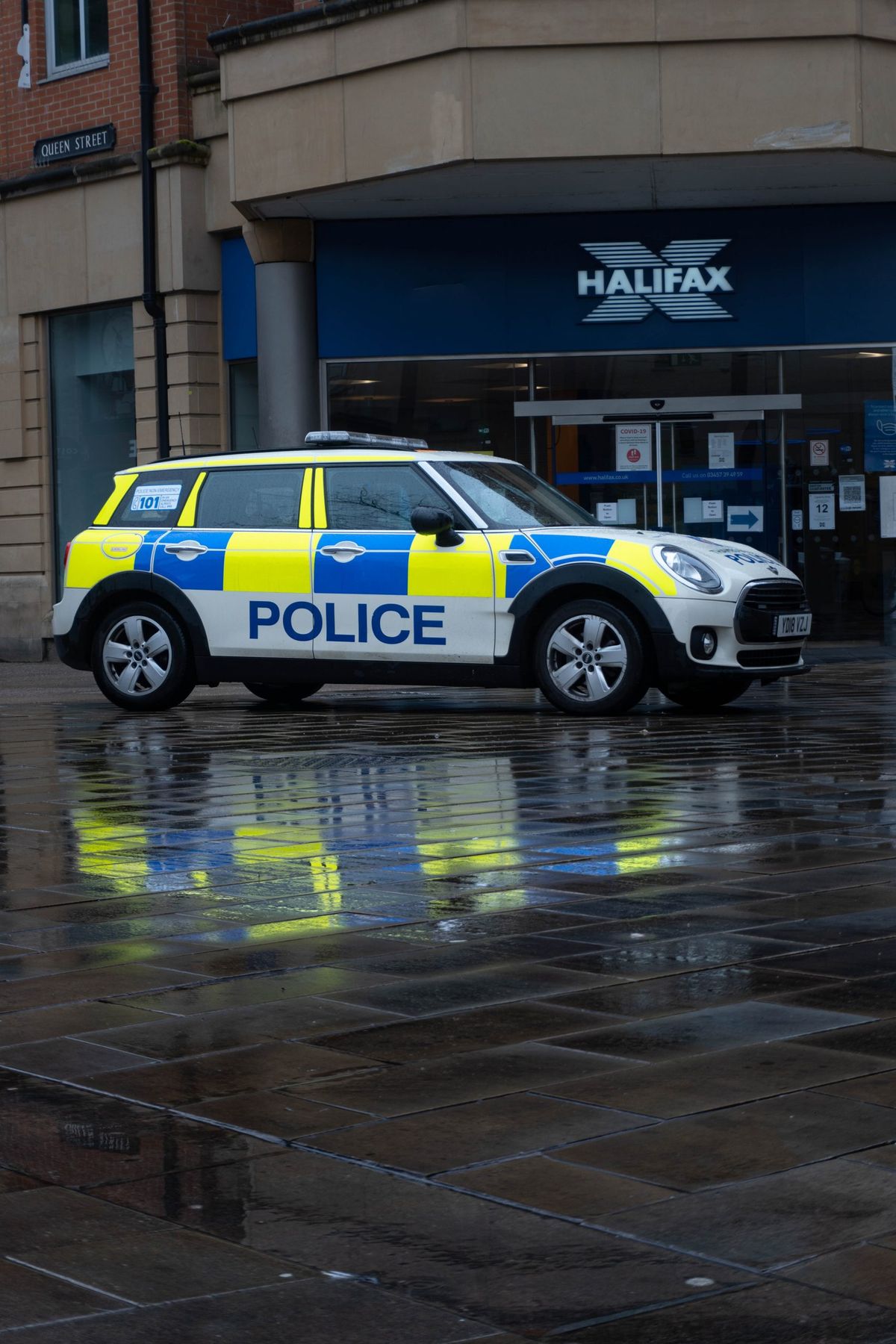The Most Amazing Police Cars Ever

Automobiles have been utilised by police for practically as long as cars have existed. Early police automobiles were just standard consumer models with unique badging. Police stations eventually added radios and lights, but nothing else was altered about the automobiles. According to Car Buzz, Ford introduced the first police packages in 1950, with the other major Detroit automakers quickly following suit. Since then, police cars have gotten quicker and more powerful, with a slew of high-tech gadgets ranging from computers to surveillance cameras.
For the majority of the previous 60 years, police cars in the United States have been copies of the most popular big sedans, capable of transporting a couple of passengers — or culprits — as well as supplementary equipment in the truck, such as guns. Some agencies realised the value of utilising sports cars to patrol roads somewhere in the 1980s, and manufacturers reacted with police versions of their most popular fast vehicles, giving a few lucky policemen the opportunity to cruise in something a little more enjoyable.
Around the world, a few very lucky policemen get to patrol in automobiles that most of us would never get to drive, let alone ride in. While most agencies are required to stick to stringent budget limitations in order to avoid upsetting taxpayers with superfluous extravagant expenditure, high-performance automobiles are frequently donated to departments for publicity purposes, while other cars are taken from criminals. We scoured the globe for the most intriguing options and offer the ten most extraordinary police cars of all time.
Bugatti Veyron
To be honest, the list of magnificent automobiles in the Dubai police force’s fleet would make most wealthy envious. The list of Ferraris, Porsches, Mercedes, and McLarens is extensive enough to warrant its own post, so we’ve included the most extraordinary of the fleet: a Bugatti Veyron. While the Chiron has since eclipsed it, it was once the most spectacular automobile in the world, sporting a gigantic W16 engine with four turbos and more than 1,000 horsepower. It is lavish and magnificent to an extreme.
The police Veyron, with a peak speed of more than 200 mph, would have little problem capturing speeders in the tiny Arab nation, but it is rarely utilised for such purposes. According to CNN, the Dubai police utilise their Veyron largely for tourist duty. And it is not for the purpose of arresting criminal visitors, but for the promotion of the city itself. Another goal is to make the police look more approachable, pleasant, and helpful, and officers encourage inquiries and photographs with the automobile from visitors. It improves the city’s reputation and, perhaps, draws more people willing to spend much-needed tourism money, or dirhams, the local currency.
Ford Mustang SSP
By 1982, police had long been renowned for chasing criminal guys in automobiles powered by large V8 engines. Police packages were typical orders for police agencies, and the “cop vehicle” was a sight that all inhabitants who did not live in a hole were familiar with. However, the California Highway Patrol began issuing tickets in a different V8-powered vehicle, the Ford Mustang. Beginning in 1982, Ford marketed the Mustang with a Special Service Package, or SSP, and sold over 15,000 copies by the program’s conclusion in 1993. (via MotorTrend). Because the CHP’s primary objective was to ticket drivers for violations rather than arrest criminals, a smaller automobile with two doors was an appropriate patrol car, especially when it could capture speeders quickly.
While these Mustangs had spent years monitoring highway traffic, a couple of them were called up for an unusual mission. However, the look of Mustangs in black and white piqued the interest of a US Air Force official involved with the U-2 espionage plane programme. Because of the remarkable size of the high-flying aircraft, pilots need aid from other eyes on the ground to correctly manage the planes for safe takeoff and landing. Air Force pilots had long employed strong V8 American vehicles for this purpose, but the Mustangs appeared to be up to the challenge. As a result, the USAF bought 19 SSP Mustangs between 1986 and 1991 to serve as U-2 spotters, and a few lucky troops were able to purchase them after they were retired.
Chevrolet Camaro B4C
Chevrolet, not to be matched by rival Ford, stepped up its game with the 1991 Camaro B4C police package. The B4C, powered by the famed tuned-port injected small block Chevy V8, served as a patrol vehicle for state police until 2002, when the Camaro line was discontinued entirely… for the time being. According to Zero 260, the special police Camaros had several improvements like as sway bars, brakes, a high-output alternator for the additional lights and radios, and separate coolers for the engine, transmission, and power steering. The final addition was a speedometer capable of reaching 145 mph.
Hemmings has a summary of one purchased in Florida in 2021, including the improvements described above. The service package was substantially identical to that of a Z28, however it was badged as the RS. Non-Z28 improvements, such as the shotgun rack and remote control for a radar detector, are also discussed. Later model year automobiles were truly quick, which was certainly not a welcoming sight for lead-footed drivers in the 1990s.
Dodge Monaco
This is not a car that was actually used in police service, but it is so famous that it felt natural to include it. According to Motor Authority, the 1980 classic John Landis film about Jake and Elwood Blues, played by John Belushi and Dan Akroyd, in their mission to race to raise cash to save an orphanage from imminent demolition has some of the craziest chase scenes and the most automobiles ever damaged on film. The Dodge Monaco police car, also known as the “Blues Brothers” Bluesmobile, is a run-down old sedan equipped with a massive loudspeaker on the roof at one point in the film that is trashed, pummelling, and physically demolished.
Toward the end of the film, there are 60 Illinois State Police cars, 17 ambulances, 42 Chicago Police cars, four Sherman tanks, and hundreds of cops involved in a chase through Chicago. Throughout the film, 13 Monaco police vehicles were employed to stand in for the Bluesmobile, giving rise to one of the film’s most iconic lines. Elwood declares of the automobile as they sit in it, gauging their preparedness to begin the adventure, “It’s got a police motor, a 440-cubic-inch plant.” It has police tyres, suspension, and shocks. It’s a pre-catalytic converter model, so it’ll run well on standard gas.
Dodge Challenger Hellcat
Everything is bigger in Texas, they say. That appears to incorporate the cop’s horsepower ratings. The Texas Highway Patrol added a 1,080 horsepower 2020 Dodge Challenger Hellcat to its inventory in October 2022. The automobile was handed to the department as a consequence of a particularly hazardous street racer, and its purchase and use is designed to be a warning to street racers, as it will outpace practically all other cars on Texas highways.
According to The Drive, Texas Highway Patrol saw the Challenger and another vehicle speeding down Interstate 10 West, attempting to catch up with and pull over the cars. Officers elected to cease their chase when speeds hit 160 mph since the speeds had gotten dangerously high, and instead tracked the cars from the air. When the automobile ran out of petrol and the driver fled on foot, he was captured. As a result of his dangerous actions, the automobile was sent to the Texas Department of Public Safety, along with additional severe penalties. The automobile may now be driven on the roadway, and its narrative will serve as a warning tale. The moral of the story is to never mess with Texas.
Lamborghini Huracan
Unlike the Autobahn, the Autostrada in Italy has limited speed limits throughout. Although the Italians have a reputation for being reckless drivers who disregard speed restrictions, they are tightly enforced in actuality. While most Italian cops are forced to make do with a fleet of modest Fiats and Alfa Romeos, the Italian State Police force boasts at least one Lamborghini. According to Car Scoops, it all started in 2004, when Lamborghini gave a 2004 Gallardo LP560-4 to the state police. This was done in order for the Sant’Agata Bolognese firm to maintain a friendly relationship with police enforcement.
The Gallardo was so favourably welcomed by the police and the general public that Lamborghini replaced it with another car, this time a Huracan, in 2009. Thirty police officers are chosen to drive the Huracan, and they all undertake specific training from Lamborghini before being certified to drive the car on patrol. To add to the goodwill and public impression, according to Jalopnik, in 2020, the police-themed Lambo was used to deliver a kidney from Padua to Rome, a 300-mile journey, in under two hours. When you create a product that allows citizens to smash speed restrictions and every sense of good judgement, it might be beneficial to sometimes endear yourself to the law.
Alfa Romeo Giulia QV
Italy has two recognised police units due to an odd quirk in history and legislation. The first is the state police, or polizia, and the second is a military arm, the carabinieri. While they both have law enforcement responsibilities, their goals and internal organisations differ slightly. According to the BBC, the carabinieri have a two-century history that precedes the Republic of Italy. In a nutshell, the polizia are responsible for maintaining civil order among civilians, whilst the carabinieri are responsible for protecting national security interests. While certain interests overlap, the polizia may work to apprehend crime syndicate bosses, while the carabinieri may work to apprehend terrorism suspects.
Regardless of their roles, having quick mobility to respond to crimes and crises is generally beneficial. According to al Volante, Alfa Romeo collaborated with the carabinieri in 2021 to deliver 1,770 units for officers to utilise in the field to aid such a reaction. They are known as Radiomobile 2.0, and they are equipped with 2.0 turbocharged gas engines that produce 200 horsepower and eight-speed gearboxes. They are additionally armoured and include shatterproof glass, emergency lights, and weapon mounts. While they are not as swift as a Huracan, having approximately 2,000 more units at their disposal will make them more helpful in the long run.
BAC Mono
While the Isle of Man, a British Crown Dependency in the Irish Sea, is just 227 square miles in size and has a population of less than 90,000 people, it nonetheless need police. Despite having fewer than 1,000 miles of paved roads, the Isle of Man TT is one of the world’s longest-running motorcycle races. Outside of racing in an officially sanctioned event, Manx citizens must obey the speed limit or risk being hauled over by a BAC Mono in official police livery.
The Mono is a track day automobile with a design reminiscent of F1 racing. Briggs Automotive Firm, according to the company, is a Liverpool-based manufacturer that specialises in tiny road vehicles suited for racing. The 2.5-liter, 4-cylinder engine in the Mono is hand-built and exceptionally lightweight, producing over 300 horsepower and propelling it to 60 mph in 2.8 seconds, with a peak speed of 170. It is really quick. And, according to Car Throttle, the Isle of Man police department received one as a gift. While the automobile is used for regular patrols and as a promotional tool to encourage safe driving, it is also a marketing move for the little firm. It would be foolish to try to outrun this automobile if you find yourself driving on the island. You are not going to be successful.
Saleen Mustang
Steve Saleen is a talented race car driver who has turned his racing passion into a rich company. Beginning in the 1980s, Saleen created a business by altering brand-new Mustangs with performance engine and body changes and selling them as Saleen Mustangs (via CJ Pony Parts). Saleen Mustangs, like the Roush and Shelby automobiles of the new millennium, are popular performance variations. Saleen has lately modified cars from other manufacturers and produced the S1, a boutique supercar. For those in the know, Saleen equals performance.
Steve grew up in southern California, which is also where he runs his businesses. According to the company’s official website, he, like other manufacturers before him, donated one of his extensively modified Mustangs to the Riverside, CA police department in 2017. This automobile has a twin-screw supercharger and is tuned by Saleen to produce a whopping 730 horsepower. It also has all of the normal police equipment, such as a whole regiment of emergency lights. While the automobile is fully outfitted for crime-fighting duties, its primary goal is to generate awareness and funds for the Police Officers’ Assistance Fund, which assists families of officers slain in the line of duty. Only one will be utilised, regardless of how it is used. Only cops who have been trained to use the vehicle will be permitted to operate it, and Saleen is providing specialist driving education at their headquarters.
Chevrolet Biscayne
The Biscayne model was debuted by Chevrolet in 1958 and was retired in 1972. (per Conceptcarz.com). It was marketed as a full-size automobile that was less expensive than the Bel Air, and most Biscaynes were stripped-down vehicles with few, if any, amenities. It was also the first automobile supplied by Chevrolet as a fleet police car. It was a smart pick because it was the more economical variant, and it came with a powerful 348-cubic-inch V8 capable of propelling the automobile to an amazing 135 mph (via Jalopnik). Affordable automobiles with plenty of space and outstanding performance were the ideal combination for police officers of the day.
While no officers will be patrolling in it today, the Santa Cruz Police Department does have one completely restored 1961 Biscayne in period-correct blue paint, complete with lights, radio, and department insignia mounted on the doors. The ancient Biscayne is utilised at public events to engage with the community, according to the Santa Cruz Police Police’s official blog, and it earned first place in an Emergency Vehicle Display exhibit in 2015, something the department seems to be extremely pleased of. Another picture from 2013 shows the department paying a visit to members of a senior facility who were treated to a ride in the cruiser, most likely bringing back memories of their own — though it is not sure that all of them were must be good.



